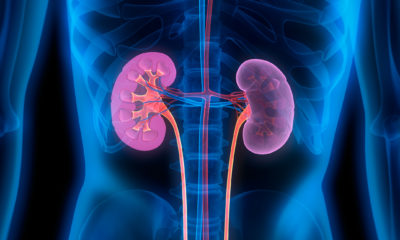Medical & Pharma
Home-Based Peritoneal Dialysis Can Help Address Problems Of Kidney Patients

According to Pradhan Mantri National Dialysis Programme (PMNDP), India has nearly two million dialysis patients who frequently have to drive to a dialysis centres two-three times a week especially for haemodialysis as missing any session could be life-threatening for them.
Amid the coronavirus scare, several issues such as lack of transport facilities, closure of several dialysis centres and fear of contraction of the virus at the healthcare facilities have made the availability of dialysis challenging for many kidney patients.
In a recent report released by The Indian Council for Medical Research (ICMR), it has been stated that due to virus existing co-morbidities among Chronic Kidney Disease (CKD) patients and their repeated unavoidable exposure to healthcare centres, they are vulnerable to contracting the deadly coronavirus. Therefore, with their immunity severely compromised already due to the kidney ailments, social distancing in the time of COVID-19 is especially important for such patients.
Hence in such a scenario, home-based dialysis therapies such as Peritoneal Dialysis (PD) have thus emerged as a boon for such patients. These new-age treatment methods have not only offered a ray of hope to kidney patients but has also made it possible for them to undergo frequent dialysis even without visiting the hospital.
What is Peritoneal Dialysis and how does it work?
In this method of care, the dialysate is placed in the belly through the catheter that will draw waste and fluid from the blood. When PD starts, the solution with salt and other additives flow from a bag through the tube into the abdomen. Once the bag is empty, the patient can remove the catheter from the bag and put a cap on it, so that they can move around to do normal activities. The dialysate, when it is inside the abdomen, absorbs extra fluids and wastes from the body.PD is a needle-free dialysis treatment option that best replicates the natural kidney function. A soft plastic tube (catheter) is placed into the abdomen by surgery. The end of the catheter remains outside the abdomen through a small incision in the skin.
The used dialysis solution can then be disposed of down the drain of a sink. The procedure is started again the next time with a fresh dialysate bag. The solution stays inside the belly for four to six hours or more and each exchange usually takes between 30 and 40 minutes.
What are its benefits?
As the patient need not travel to the dialysis centre for treatment, there is greater freedom and flexibility in the treatment schedule at home. PD can also go on even if the patient is sleeping and, does not put pressure on the heart. However, the patient’s family has to ensure that adequate hygiene is maintained around the patient and at home in general that includes frequent hand washing to reduce the risk of infection to the patient. Due to the reduced infrastructure, the overall cost of treatment under peritoneal dialysis is also reduced.
The new treatment method not only helps the patients in saving a lot of time and travel expenses but also enables them to continue working from the convenience of their homes while undergoing the treatment.
Myths and Barriers
Even though the benefits of peritoneal dialysis have been realized in recent times, its penetration in the country still remains low. The primary reasons behind its low penetration are lack of awareness, unavailability of insurance reimbursement and prevalent attitude barriers.
A major myth associated with home healthcare is that people feel it is not required if a patient is already visiting hospitals for treatment. As a matter of fact, home healthcare supplements the efforts of hospitals and involves working closely with doctors and nurses to ensure the best care possible to a patient. Many patients also fear to dialyse without direct medical supervision or fear that they will not be able to perform self-care dialysis adequately. However, during home-based dialysis, there is the help provided to the patient. A doctor is only a phone call away.
Patients are fully under the observation of medical experts. Hence, with number of coronavirus cases increasing every day, there is an urgent need for regular counselling of patients and their caregivers on the treatment procedure/protocols. The medical fraternity now more than ever needs to build awareness about PD such that the patients as well as the medical professionals can consider it as a preferred therapy option for a CKD patient. There is an urgent need to address these barriers at various levels in order to increase the reach of this life-saving therapy.
Conclusion
As medical science is evolving, we now have convenient procedures like PD that can be performed at home, work or even while travelling. With adequate training and provision of helpers, PD therapy can be successfully implemented across the country. Although the government has included PD as part of the national health mission policy, it is important to implement it pan-India on the ground to manage the high number of kidney patients, especially in the Covid-19 era. Appropriate and timely suggestions and treatment by doctors can save infected people who are battling between life and death.
Authored by Dr Vidyashankar P, Lead Consultant – Nephrology, Aster CMI Hospital

































